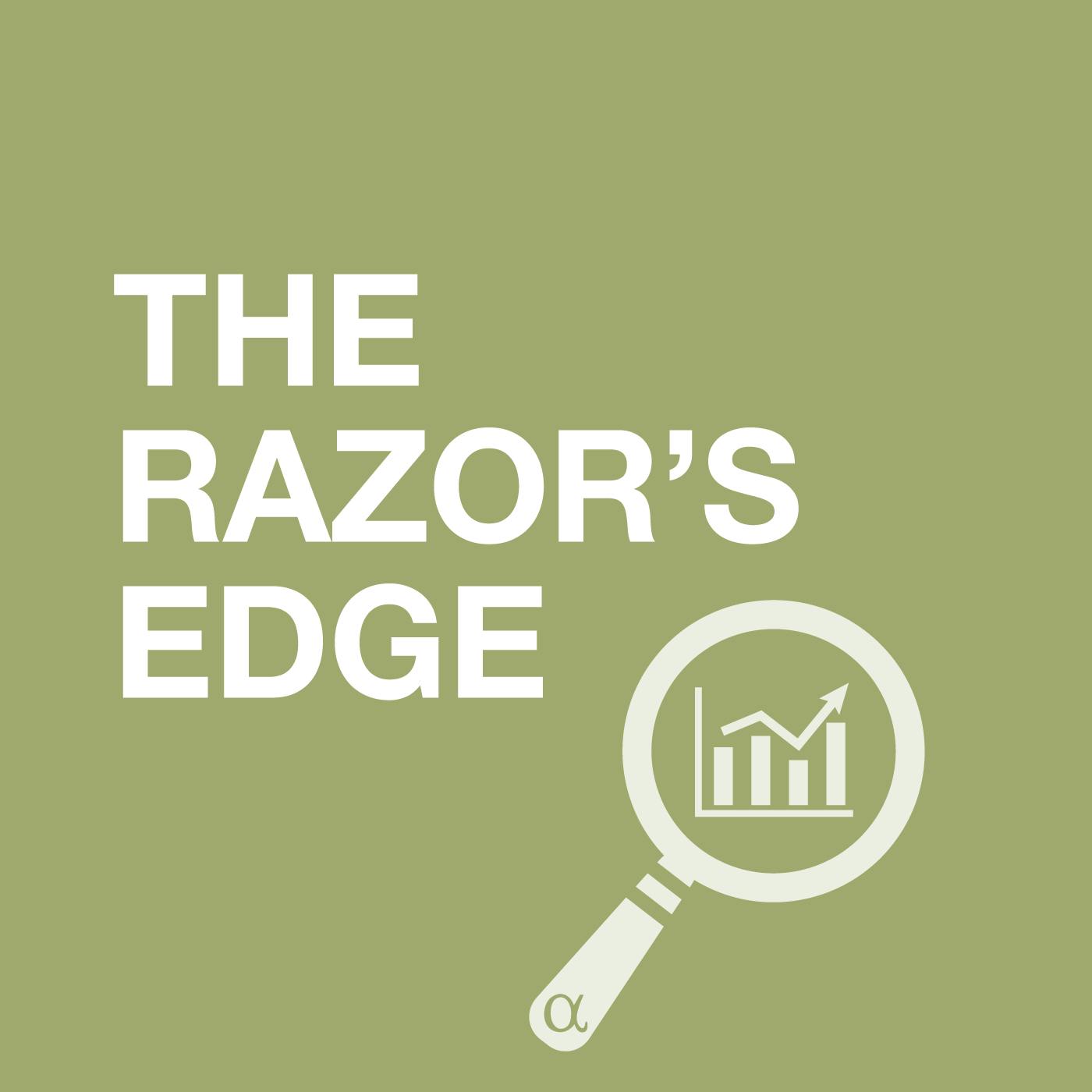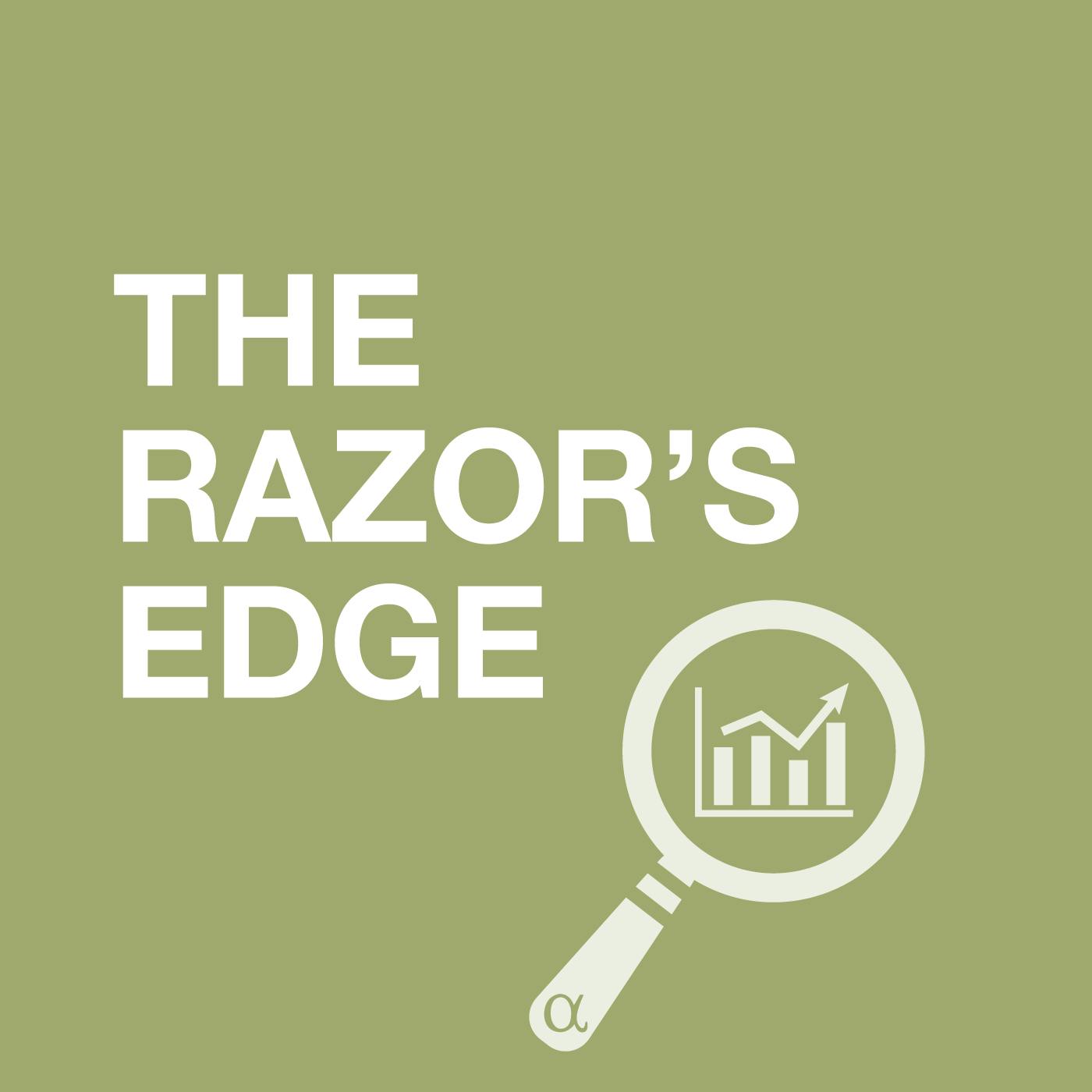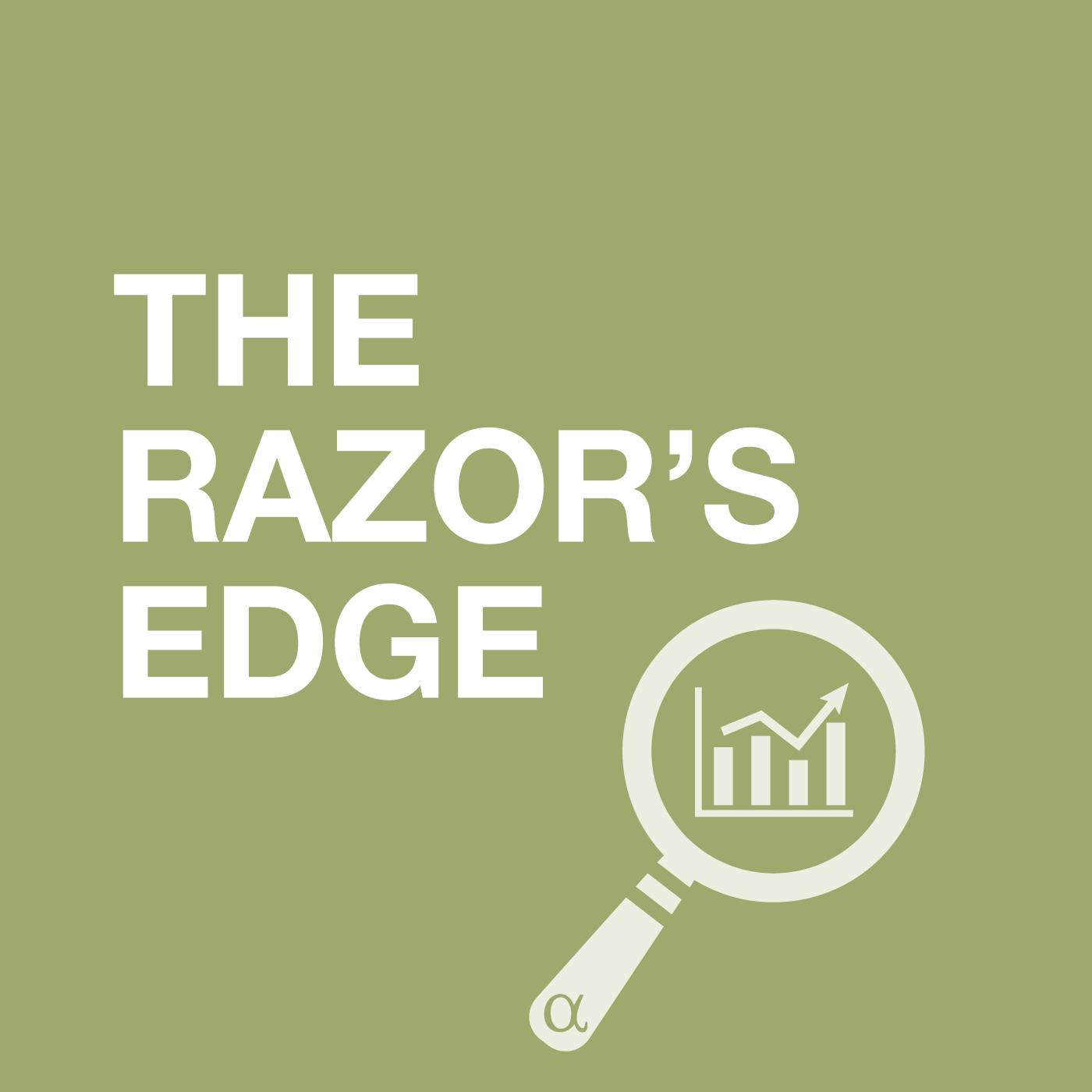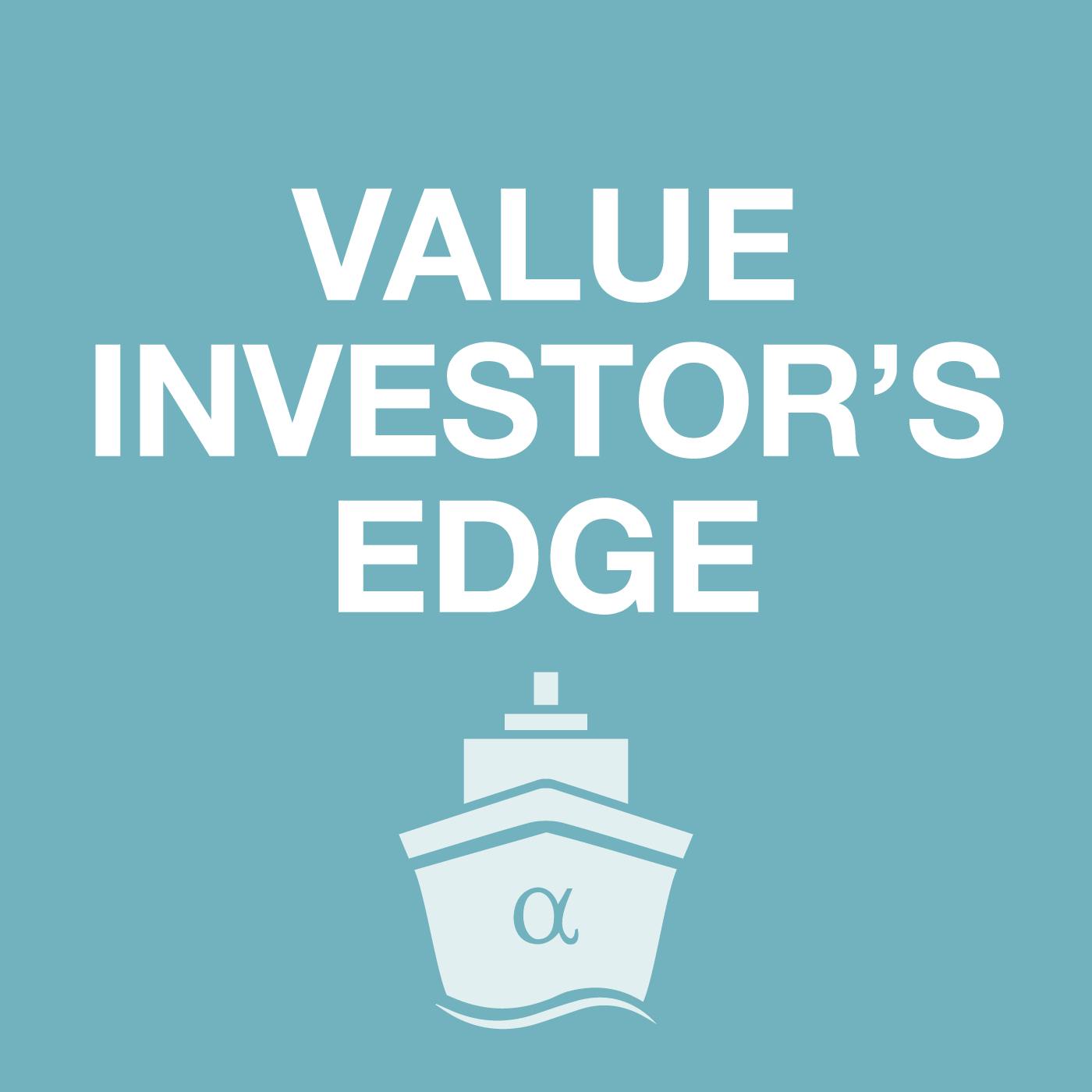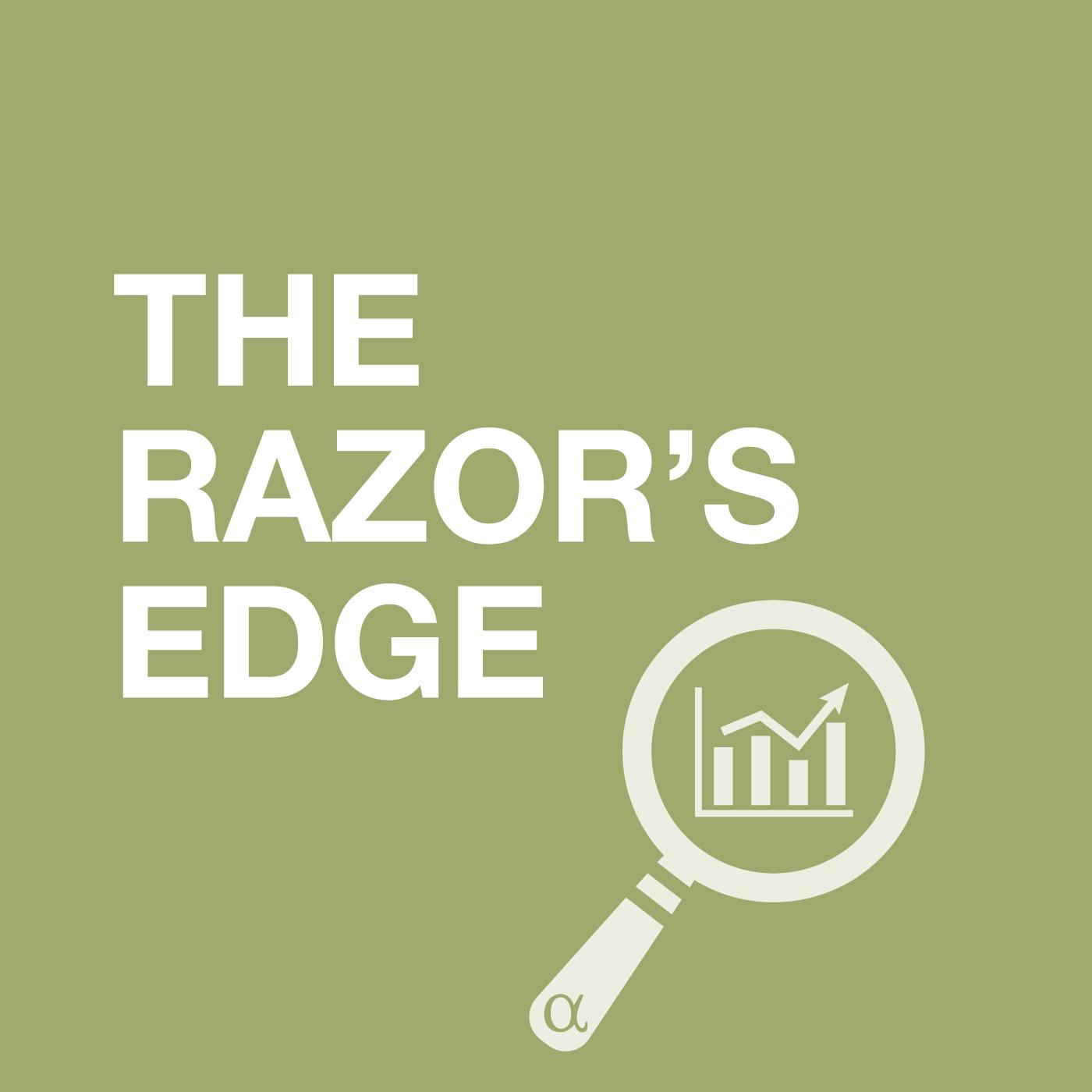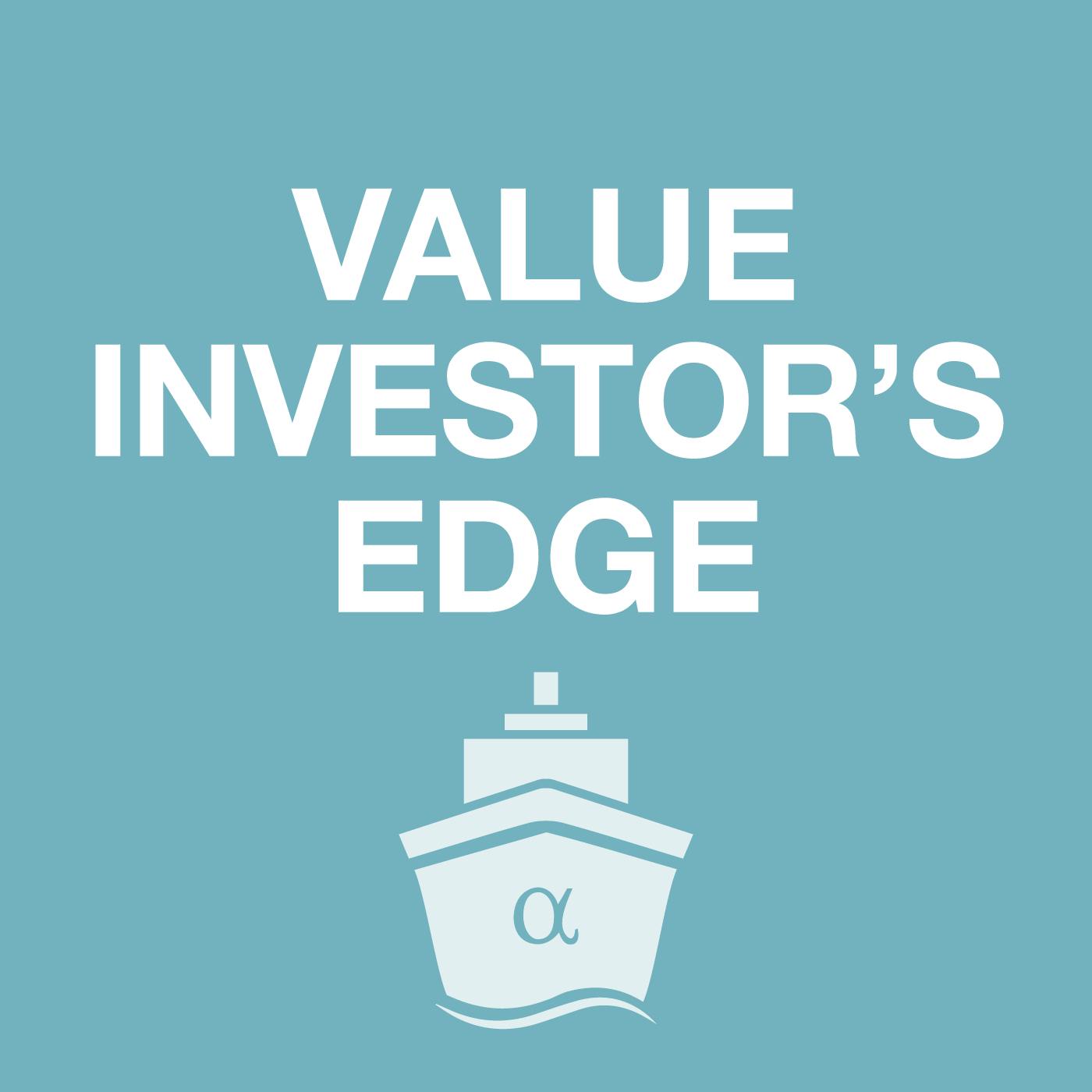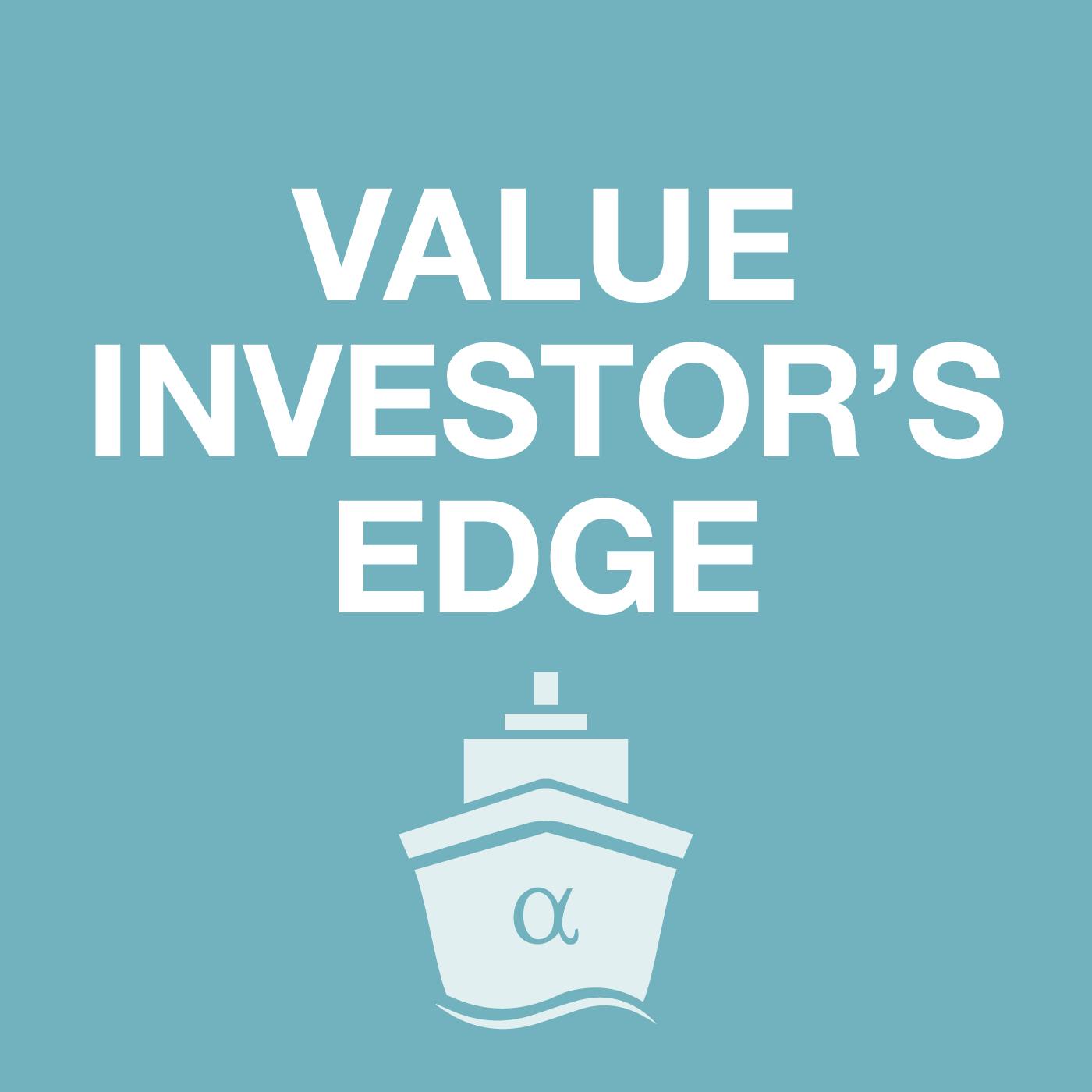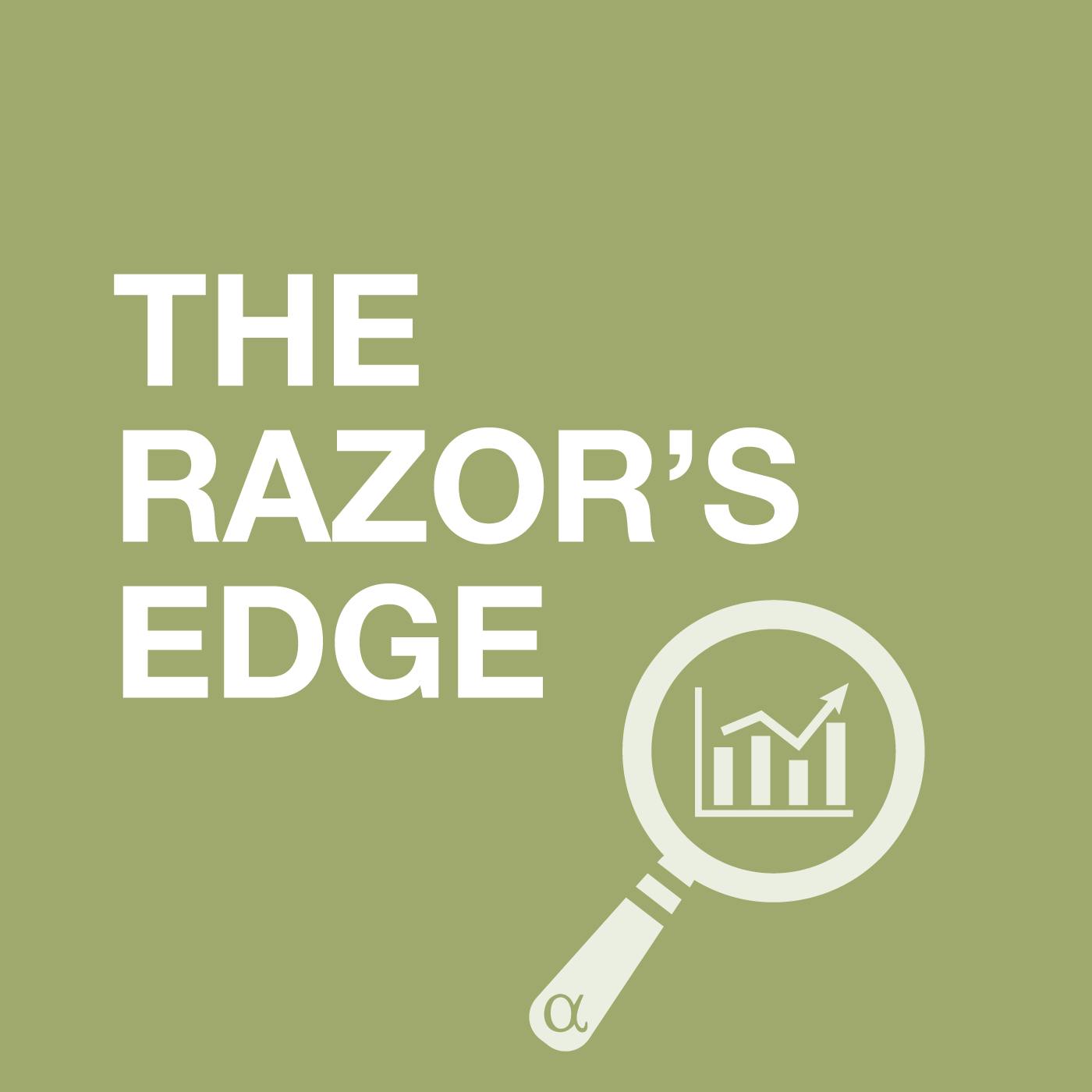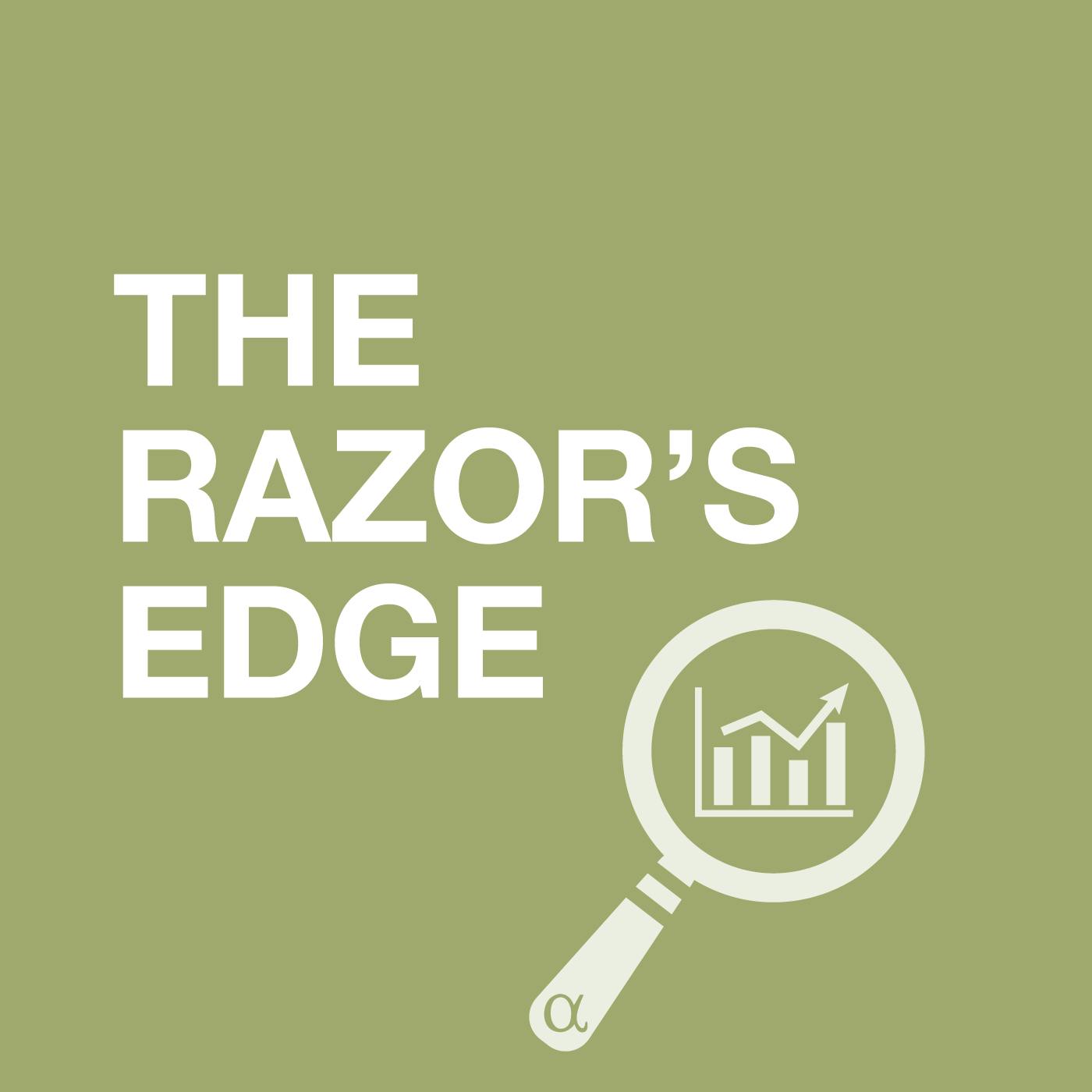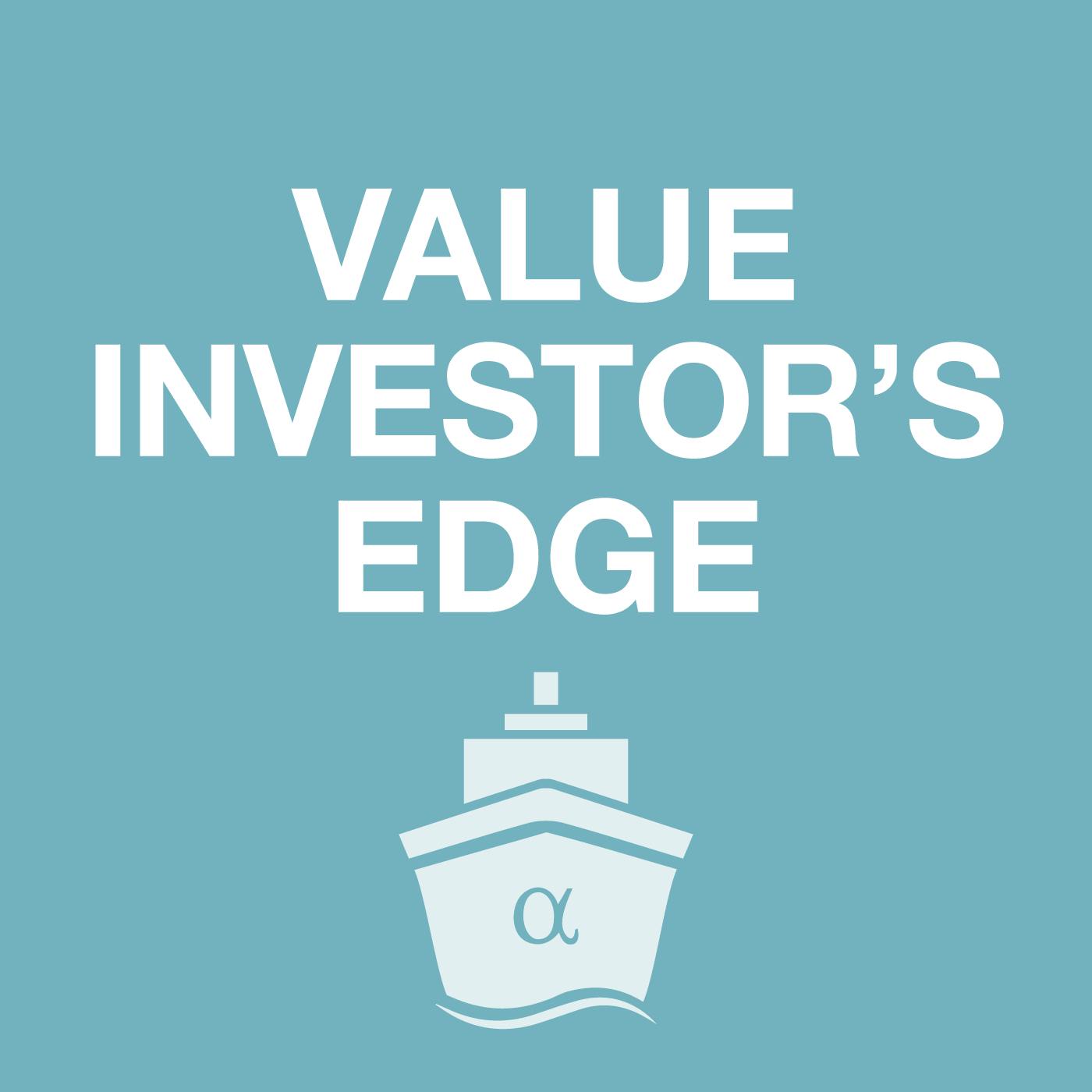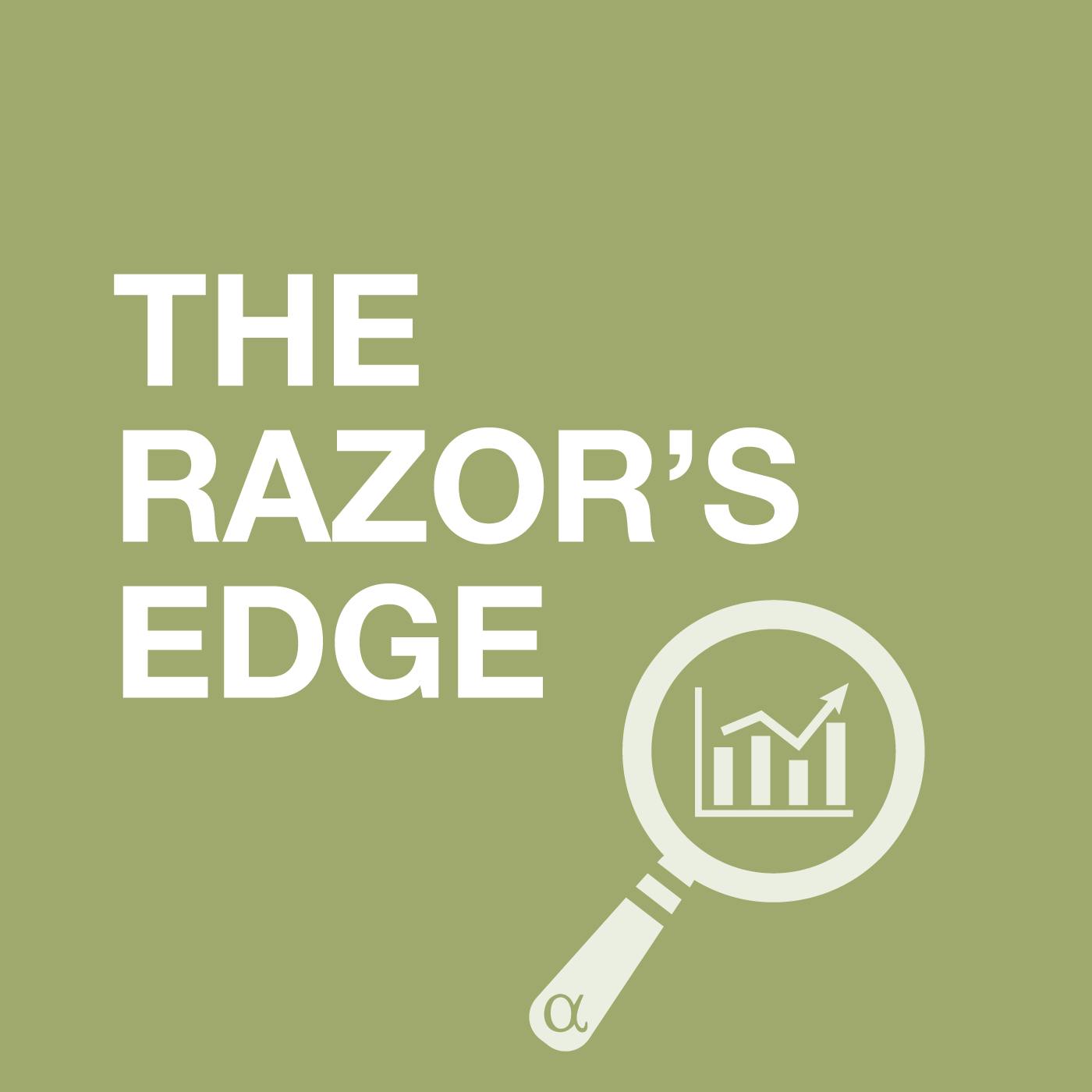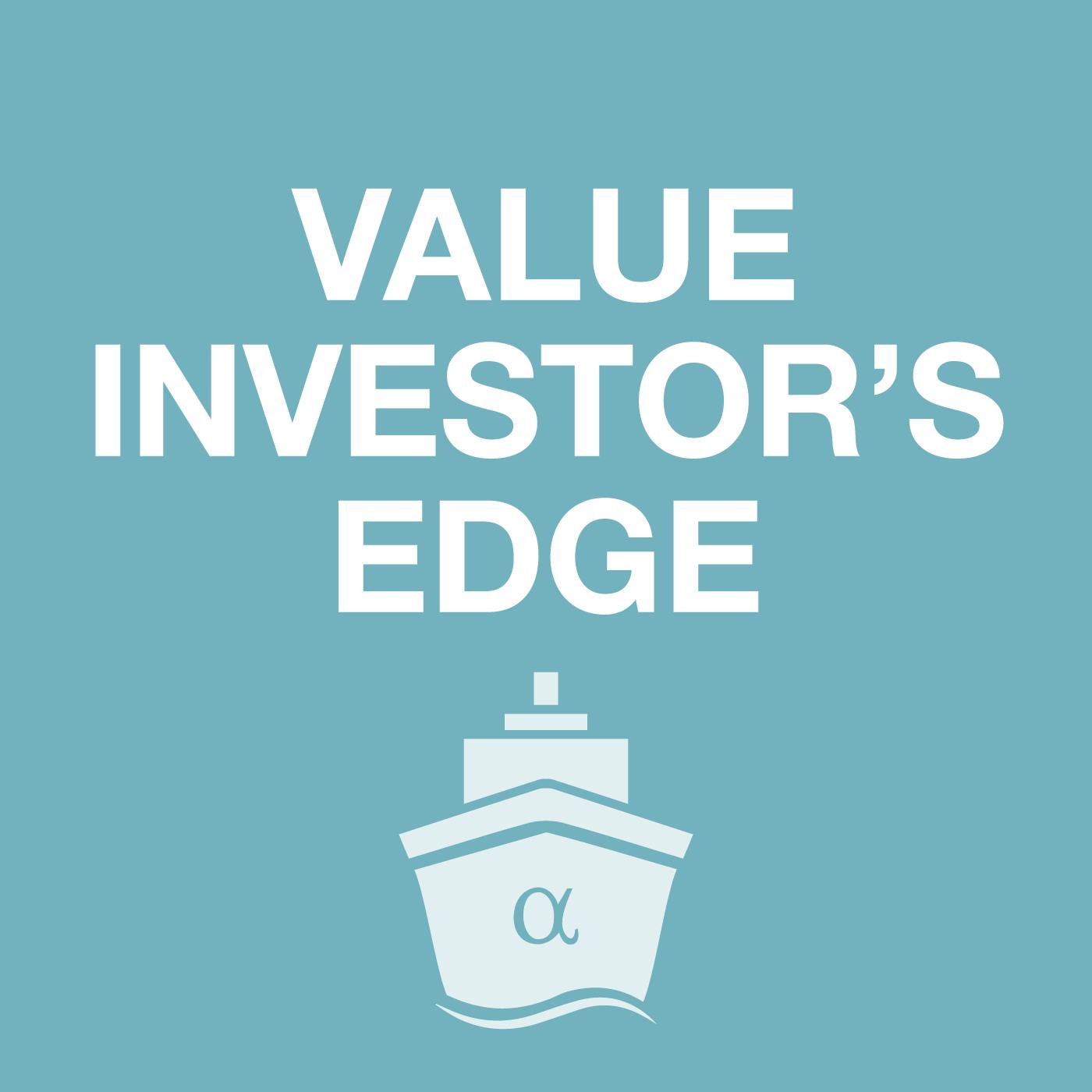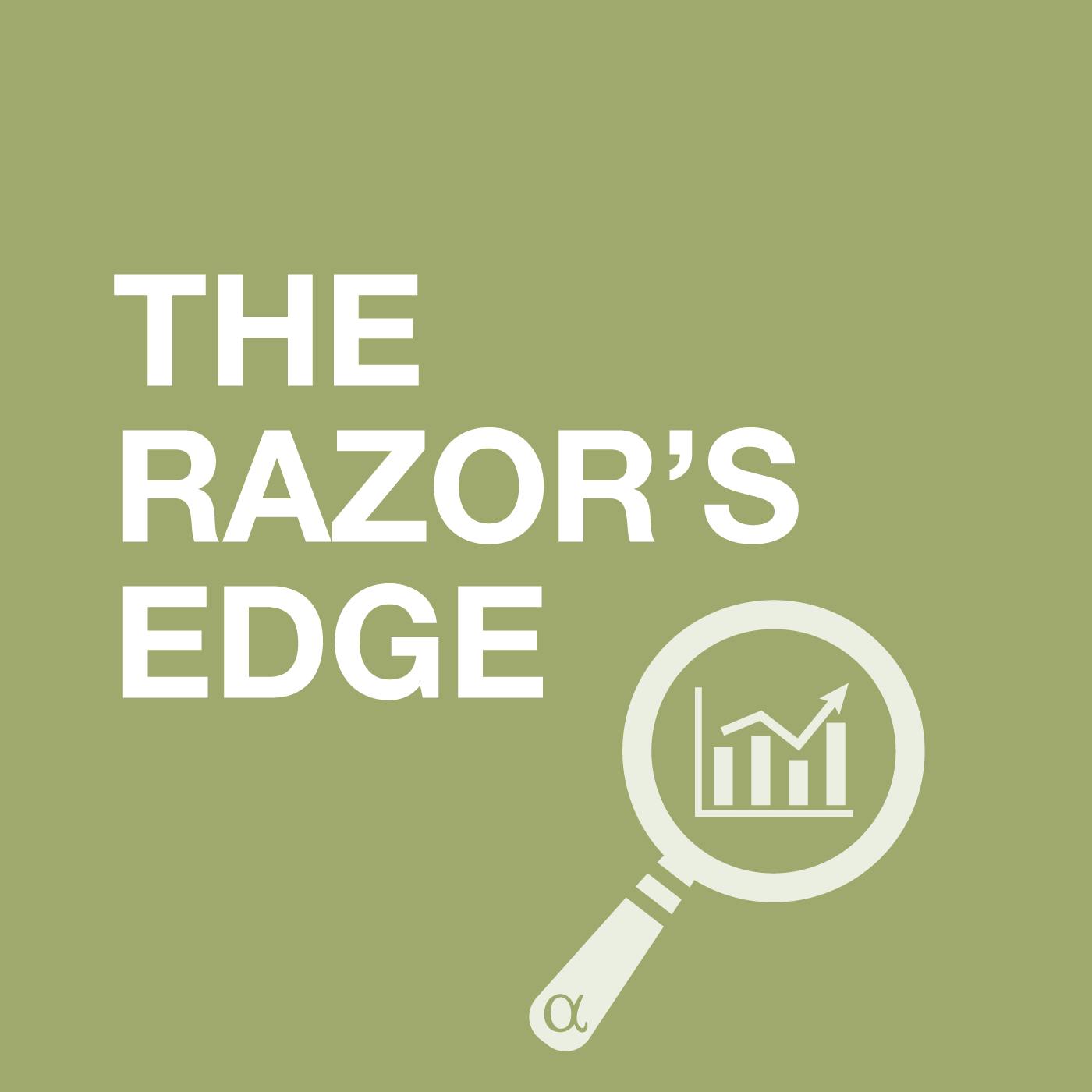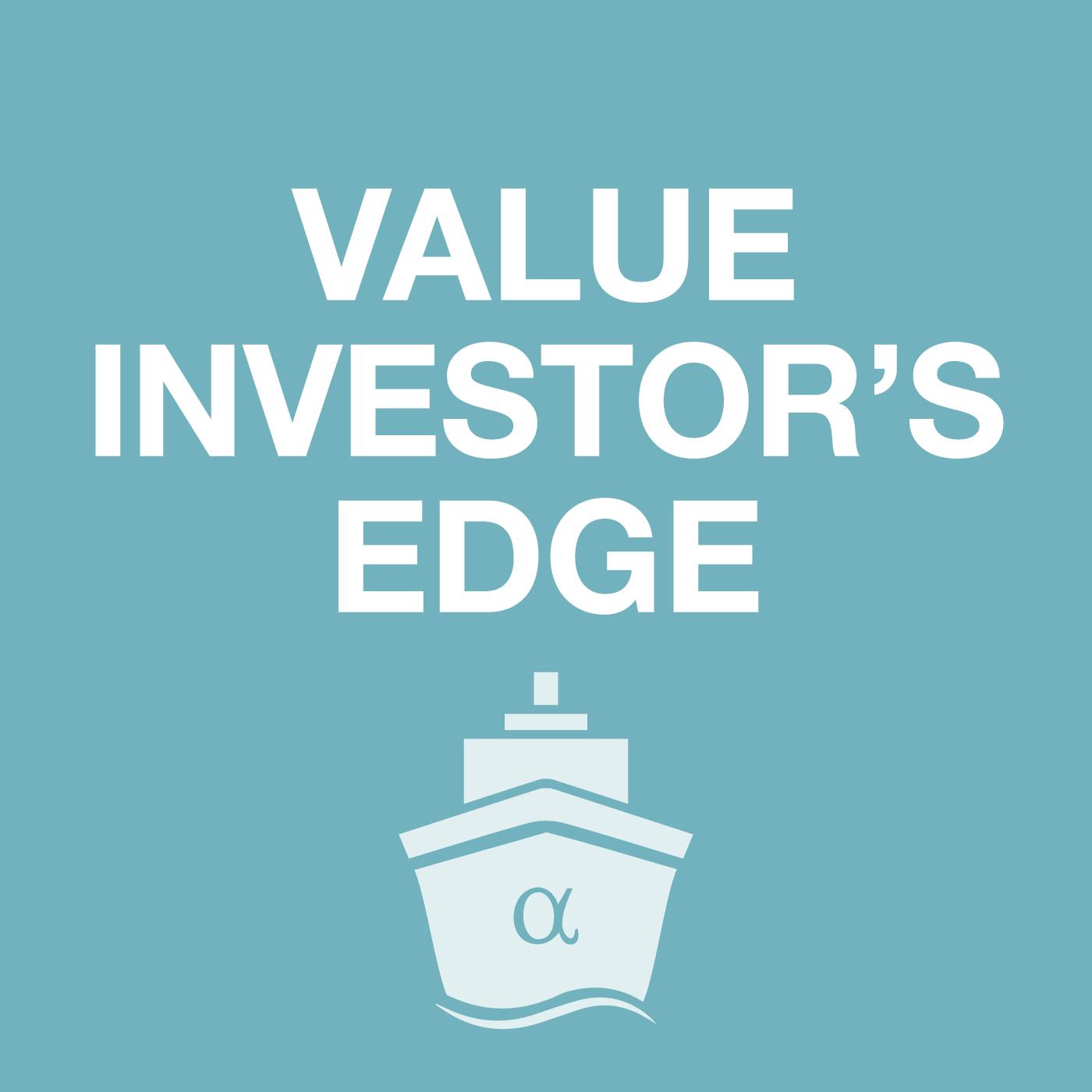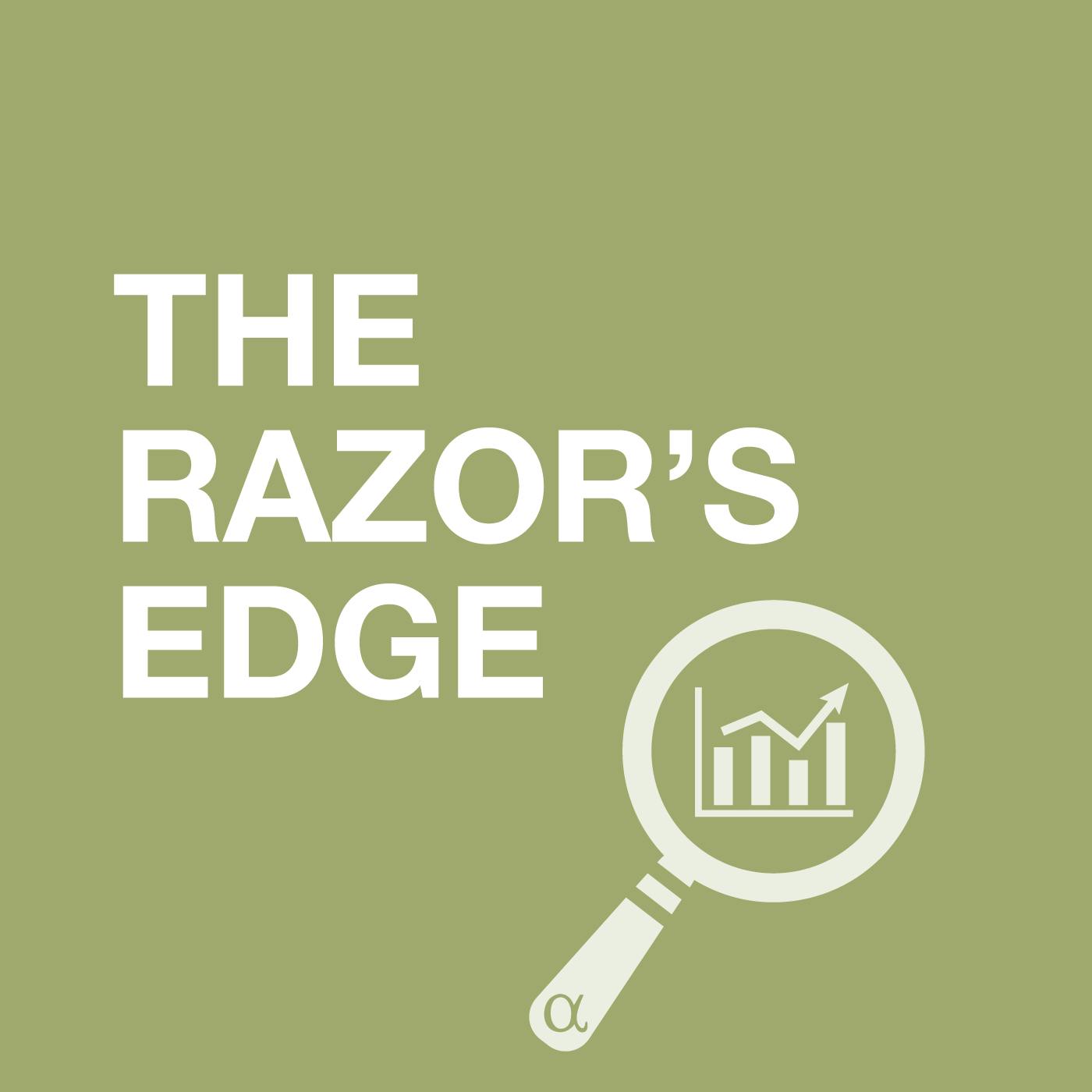Discover The Investing Edge
The Investing Edge
The Investing Edge
Author: Seeking Alpha
Subscribed: 106Played: 5,791Subscribe
Share
© Seeking Alpha
Description
The Investing Edge features shows from some of Seeking Alpha's top authors, focused on their unique investment strategies and styles. Authors will speak with CEOs and industry experts, break down key market stories and topics, and share insights on how they research new investments.
43 Episodes
Reverse
A quick update about the programming on this channel - this channel will be only featuring the Razor's Edge going forward. To get new Value Investor's Edge Live podcasts, subscribe to the Marketplace Roundtable Podcast channel, available here:
iTunes/Apple Podcasts
Spotify
Stitcher
Seeking Alpha
One of the stranger dislocations in 2020 has been the behavior of stocks that are bound to or have already filed bankruptcy, with Hertz's offering of new equity this week as the biggest example of the phenomenon. We speak with Sam Zughayer, managing director of Berenson & Company, about what might explain this, what he's seeing, and where this may end up.
Topics Covered
4:00 – Where Sam gets involved in the process normally
8:00 – What makes this time different
14:00 – What the government learned in 2009 and how that affects things
18:30 – Rule of contract law in the current climate
21:00 – The implication of the Hertz ruling
27:00 – The capital structure component and the structural effects for business
32:00 – The Hertz precedent and effect on other bankruptcies
35:00 – The longer-term legacies of this period
38:30 – The problem with shale oil
45:00 – Is this unhealthy? The Zombie element of sustaining firms.
47:00 – And the formerly healthy companies that fall, what of them?
50:00 – Looking back at stock buybacks
53:00 – Will behavior change?
We visit the software as a service sector for the third time in a row, as the earnings week we were waiting for came to pass. Zoom reported the so-called 'greatest quarter ever in software', and skewed expectations for peers like PagerDuty and Slack. So, does the market have the reaction right, and where do we go from here? Akram's Razor and Daniel Shvartsman break it down.
Topics Covered
2:00 minute mark – Digging into Zoom's guidance
6:00 – The timing of PagerDuty and Slack's earnings (two days after Zoom's).
8:00 – What about the expansion in large clients for Zoom and potential new verticals
13:30 – How did Zoom's report affect PagerDuty/Slack's reports
18:00 – Why isn’t guidance going higher for some of these SaaS names?
28:00 – The longer onboarding cycle for Slack/PagerDuty
33:00 – The convergence of the attention economy
36:00 – The Dropbox angle
42:00 – Ramping up of adoption curves
48:00 – Macro and sector context to keep in mind
We continue to follow the software as a service sector and the impact of the work from home world, but this time with an outside perspective. Justen Stepka, the founder of Authentisoft and then a longtime product management executive at Atlassian and Docker, joined us to talk about his positions in Slack and Atlassian and what makes the companies stand out. Currently the co-CEO/co-founder of Enterprise Fund, a private equity firm, he also shares his views on the work from home environment we're in and its potential knock-on effects, as well as what he's seeing in private markets.
Topics Covered
2:30 minute mark - The importance of R&D in retention
6:00 - Product stickiness vs. ease of use
11:30 - Evaluating R&D as a competitive edge
15:00 - The importance of dogfooding
18:00 - Okta's position
23:30 - How can a software company really be on sale in this market?
28:45 - ServiceNow's position
30:00 - What's next in the industry, where is Justen watching, and what does the private market look like?
36:30 - The change in perspective from being an insider to an outside investor
41:00 - Work from Home and its broader effects
52:00 - Commercial real estate
With attention still focused on the tanker segment, J Mintzmyer speaks to underfollowed Torm PLC about what they're seeing in the wake of a solid Q1 earnings report and Q2 outlook.
Topics Covered
1:15 minute mark - Overview of current product tanker markets:
3:15 - Differences between LR & MR markets?
7:00 - How many of your LR2s are trading dirty vs. clean?
9:15 - How long is the destocking period likely to last, impact to rates?
14:00 - Capital allocation priorities at this time?
17:00 - Nearly 25 ships aged 15+, how are these performing? Plans to sell?
21:15 - Any levers available to close NAV discount?
24:00 - Free float is very thin, is there an ability to boost this without dilution?
30:15 - Crew replacements ongoing or still stuck on water?
35:00 - Current newbuild environment: Shipyards aggressively discounting yet?
37:45 - What differentiates Torm from peers and competitors?
The software as a service sector has passed its first recession test in flying colors, as the nature of the coronavirus market has led to a increased business for these companies. With two of the most popular names - Slack and Zoom - due to report in a couple weeks, Akram's Razor and Daniel Shvartsman check in on the state of the sector and whether work from home is a benefit or a liability.
Topics Covered:
3:00 minute mark – What explains a big move like Twilio's
7:00 - The broader valuation context
15:00 - The prevailing dynamic of competition
21:00 - Valuation pair mismatches – DDOG/NEWR, PD/EVBG, WORK/ZM
36:30 – Leaving the 10x EV/sales barrier in the past
46:00 – Where does Slack go when the light bulb turns on?
55:30 – the NFLX parallel for Zoom and the search for a pivot
1:03:00 – Slack earnings preview
J Mintzmyer speaks with Ardmore Shipping management about Q1 and the fast-moving product tanker section.
Topics Covered
1:00 minute mark - What’s the underlying trade in the product tanker markets?
2:30 - Thoughts on broker rates versus actual ‘market levels?’
5:30 - Difference in voyages in progress versus completed QTD?
6:30 - Thoughts on chemical side of the business, rates coming in lower?
8:45 - Shift in dividend policy, shift to deleveraging?
12:00 - Is Ardmore aligned? Can we trust you not to blow money on ships?
16:00 - At what point do you have to repurchase shares?
18:30 - Repurchases versus secondhand vessel acquisitions.
22:00 - Review of normalized ROA and ROE?
23:15 - Review of normal average MR product market?
27:00 - How do you communicate a ‘normalized value’?
30:15 - Visibility and thoughts on product floating storage volumes?
32:00 - Indications from customers/markets regarding terminal capacity?
34:30 - Parting thoughts for investors in Ardmore or product tankers?
In the most ambitious crossover event in Seeking Alpha podcast history, we turn the tables around. J Mintzmyer joins Akram's Razor and Daniel Shvartsman to talk the tanker trade, which is a hotly discussed topic in the markets these days. While the tanker rates and industry set up would seem to align with a generational shift, share prices have yet to pick up. Recorded at the beginning of a busy week for shipping sector earnings, it should provide some interesting background for people looking at this trade and the sector more generally.
Topics Covered
2:00 minute mark - The endurance of the shipping cycle
12:00 - Mean reversion for Value?
18:00 - The oil crash and commodity ETFs
22:00 - The abnormalities in this cycle
27:00 - How supply and demand have lined up
31:00 - Investor reactions
35:30 - The Macro context
46:00 - Dry bulk woes
49:30 - Talking the downside in the tanker trade
54:00 - The management and capital allocation question
58:00 - Getting down to some picks
J Mintzmyer spoke with Frontline's CEO, Robert Hvide Macleod, last week about how the tanker market is shaping up amidst a lot of commodity price moves and investor interest.
Topics Covered
1:00 minute mark - What has changed in the market YTD compared to initial setups?
3:00 - Have we seen something like this in the market before?
4:30 - Preferable data source or metric for global storage balance?
6:30 - Discussion of ‘oil on water’ metric
10:30 - What is LR2 clean/dirty split? What is driving LR2 spike?
11:45 - What time charter offers are available in the markets?
15:00 - Fixtures available anywhere for FRO? Indexes accurate?
18:45 - Comments on Saudi flotilla? What happens if destinations change?
21:00 - How does cash payment flow work for spot vs. TC?
23:30 - Any concerns with CP risk? Precedent for this?
25:15 - Chance of shifting terms of spot market payment?
26:45 - Risk factor of ‘famine’ on the other side of the curve?
31:00 - IMO 2020: Spreads are down, will they come back?
36:30 - Capital allocation priorities now? Any newbuildings? Consolidation?
41:15 - Formally swearing off newbuilds? Yes!
42:30 - What is holding back the tanker stocks in these markets?
We break down Snap's upside earnings report and what it means for the internet advertising space, coronavirus plays, the effects of stimulus, and a lot more.
Topics Covered
2:30 minute mark: Setting the scene
7:30: Attention Costs
10:00: The Hollywood effect
14:00: Snap's international growth
18:00: The filter issue
23:00: Relative valuation
27:00: Amazon's perfect storm
30:00: Other advertisers' prospects
33:00: The demographic questions
37:00: Stimulus effects
53:00: Shifting spending
59:00: Differing audiences
1:01:00: Twitter digression
1:07:00: How to interpret this earnings season
1:12:00: The Tiktok threat
1:17:00: Recovery risks
1:24:00: Second level effects
Zoom (ZM) was a go-go momentum stock in its first year of trading, with revenue multiples and performance outpacing most of its SAAS (software as a service peers). That was to a degree deserved due to the company's profitable business model and competitive advantages as a smooth, easy-to use video communications platform.
With the advent of lockdowns, quarantines, and social distancing to combat the spread of COVID-19, Zoom has transcended from growth stock favorite to widely known consumer brand and almost an inverse ETF of the bear market. While value investors like to grumble about the market getting irrational about growth stocks, there are some reasons to be optimistic about Zoom's prospects at least as compared to where they stood on January 1st. The increased usage of the product - while costing Zoom more to support - should both accelerate adoption for the long-term and potentially open up new avenues and use cases. On the other hand, the increased focus on Zoom has also highlighted issues the company has, most primarily with security, something hardwired into the company's fantastic success to date.
We discussed the cross-currents at play here and where Zoom might be headed next.
Topics Covered
2:30 minute mark - The Zoom setup
6:00 - Zoom's origin story and its advantage
14:15 - Zoom's killer app
16:30 - Questions that are beginning to arise
21:15 - The security issues
26:30 - Enterprise vs. consumer business model, and being thesocial distancing play
33:00 - Overall market description and Zoom's rise
38:15 - The competition
47:00 - Justifying the valuation?
55:00 - What sort of revenue upside is there
1:04:00 - Sorting out temporary from permanent
1:14:30 - The Zoom production studio angle
1:19:00 - China backlash
1:23:00 - Regulation
1:28:00 - A final macro note
J Mintzmyer speaks with Euronav Hugo de Stoop as part of Value Investor's Edge's COVID 19 / Oil Price War Forum. While shipping is in turmoil, oil tankers like Euronav are very nicely positioned. The two discuss the outlook for the months ahead.
Topics Covered
2:15 minute mark - How is COVID-19 impacting the crude tanker markets and EURN?
4:45 -How has the oil price war shifted the market- How is EURN positioned?
8:00 - Is this market surge different than last fall with COSCO?
13:00 - Only a few fixtures so far this week, more expected soon?
14:00 - IMO 2020 update, any shift in strategy?
19:45 - Any plans to load up more VLSFO to hedge lower fuel costs?
23:00 -The other ULCC on a new storage contract? Other storage requests?
27:30 - How do the recent resales fit into your fleet and IMO strategy?
31:00 - Any near-term supply risks or overhang on orders?
36:00 - Has your capital allocation strategy shifted at all this year?
40:30 - How to differentiate between vessel acquisitions and repurchases?
43:30 - Clarification on lock-out timing- delay to 1 Apr? Annual meeting vote?
50:30 - Any shift to your views on leverage? Still ample capacity?
After the Disney podcast we recorded last Friday and posted yesterday, Akram's Razor and Daniel Shvartsman continued to discuss the macro environment and the strange place we're in.
Disney is considered as blue-chip as it gets, but when you break down its famous flywheel - different business lines that all flow together to create the greatest diversions in the world - there's a lot of trouble spread around. Theme parks, box office, live sports, advertising are all under pressure - is Disney + enough to make up for that? We discuss the outlook for the entertainment company.
Topics covered:
2:30 minute mark -The Corona bear ETF
7:30 - The flywheel is stuck
12:30 - Long-term effect on consumer behavior in travel
17:00 - The significance of Bob Chapek's theme parks experience
25:00 - Cruise lines and international flags
28:00 - Whither (wither?) the box office?
36:00 - Box Office as marketing
41:00 - ESPN - the wild card
56:00 - Disney+ - the ace in the hole?
1:01:00 - The next WFH play
1:09:00 - The diversionary business model in a diversionless world
The last time J Mintzmyer and Value Investor's Edge hosted a virtual investor forum featuring industry analysts, management teams, and investors, all the way back in January 2020, it was like another world. IMO 2020 was still the buzzword, post New Year cyclicality was driving behavior, and coronavirus looked like it was a local issue in China. Meanwhile, a virtual investor forum proved to be quite ahead of the curve.
A lot has changed in two months. So, last week Mintzmyer and team hosted 15 guests ranging from industry analysts to investors to management teams, with a look at how the shipping situation has changed. The second public episode features Teekay LNG Partners' (TGP) management team, namely CEO Mark Kremin and CFO Scott Gayton. They discuss how their capital allocation looks under the current climate and whether there are any counterparty risks investors should watch out for.
Topics Covered
2:00 minute mark - Direct Coronavirus impacts to current work environment?
5:00 - Any direct COVID-19 impacts to TGP itself?
7:15 - Any fundamental changes for LNG shipping? Oil price war impact?
9:00 - Any shift in longer-term growth projects yet? Qatar plans?
10:45 - Concern for counterparties? Force majeure risk?
14:30 - Any exposure left to non-investment grade counterparties?
18:30 - Additional ‘deep dive’ into contracts regarding force majeure?
21:00 - How has this market shifted capital allocation priorities?
24:00 - Reiterating full dividend stability at $0.25/qtr?
25:15 - Opportunistically repurchasing units here? Higher volumes?
27:00 - Is the NOK bond market still open? Revolver extension?
30:15 - Any interest in repurchasing the preferred equity?
33:45 - Any interest in consolidation or equity plays in other firms?
34:30 - Midsize LPG rates holding up?
36:00 - When do forward LNG rates start to matter?
38:00 - Asking for a ‘full pledge’ to keep the dividend regardless of price.
As the coronavirus bear market continues to roil investors, we talk about what effect its had on the tech sector in general. Is the bubble over? Will the Nasdaq be a safe haven and a future outperformer? We discuss the impact already felt in the market and where things might go.
Topics Covered
3:00 minute mark - The seismic shift
6:00 - Change in valuation approach
12:00 - Can the Nasdaq continue to outperform
19:00 - Risk assessment
25:00 - Owning market performance and the loss of margin of safety
34:00 - How ot assess going forward
39:00 - Potential sectors to invest in
48:00 - Are we at a divergence?
56:00 - Does a safe haven now sacrifice future growth?
1:03:00 - The flattening of volatility and the natural reaction
1:09:00 - The longer-term impact
1:12:00 - Close the market?
The last time J Mintzmyer and Value Investor's Edge hosted a virtual investor forum featuring industry analysts, management teams, and investors, all the way back in January 2020, it was like another world. IMO 2020 was still the buzzword, post New Year cyclicality was driving behavior, and coronavirus looked like it was a local issue in China.
A lot has changed in two months. As Mintzmyer and the VIE team gather a new round of participants for a COVID-19 and Oil Price War focused forum this week, one of the themes is how that situation has changed. And there's no better place to start than with International Seaways (INSW). CEO Lois Zabrocky and CFO Jeff Pribor took part in the first forum - it was our most recent VIE episode posted - so it offers an easy compare and contrast.
Topics Covered
2:00 minute mark: What is the immediate impact of COVID-19 to your markets?
3:15 - How much follow-on activity is coming out of China?
4:45 - Any non-traditional routes developing due to the oil price war?
6:00 - How does INSW benefit from this market?
8:00 - Is the Suezmax market benefitting from this strength?
10:45 - How is the Panamax market performing now?
12:00 - MR product tanker market update?
13:45 - Any indications of potential product market storage?
14:45 - Have you adjusted your operations, shoreside and at-sea for COVID?
17:30 - IMO 2020 transition and scrubber update?
21:15 - Current timeline of scrubber installations in China (60 days!)
22:30 - Can you delay or back-out of scrubber installations?
25:00 - What is your current and target balance sheet leverage?
28:00 - Restrictive covenants in the current debt facility for repurchases?
29:45 - Commentary on dividends and share repurchases?
Elliott Management waged a short-lived and a successful activist campaign against Twitter, at least from the perspective of getting the company to respond. While the long-term results and the fate of Jack Dorsey as CEO are still unclear, we discuss whether Twitter's future is appealing for shareholders, what could actually be done to fix Twitter, and why this might not be the lay-up it seems.
Topics Covered:
3:00 - Activist shareholders... Elliot's involvement.
4:30 - Is the goal solely to remove Dorsey?
9:30 - What's wrong with Twitter?
15:00 - Not growing fast enough given its exposure
23:30 - About Scott Galloway
26:30 - Should/shouldn't Twitter be more like Facebook?
29:30 - Strong user base that doesn't like change
33:45 - What do you think is going to happen with Twitter in the next weeks and months?
38:00 - What would you do in your first year as CEO of Twitter?
48:30 - Facebook excels at gaining attention, how can Twitter do this better?
53:00 - Twitter has a narrower appeal than Facebook.
1:01:30 - What can a full time CEO do?
1:05:00 - Who would buy Twitter? How to add revenue?
1:23:00 - Buy at this price?
Four different forces combined to create a big sell-off last week, and then a jagged but strong rebound this week. There's of course the spread of the coronavirus, COVID-19. There is the Democratic primary in the US and what it foretells for the Presidential election in November. There is the, ahem, healthy valuation of the stock market, poised at all-time highs before the 7-session sell-off. And there's the role of the Federal Reserve, both in setting interest rates and in providing liquidity to the markets. We try to break down what matters and what is transient here, while conceding that uncertainty is a big part of the overall outlook.
Topics Covered
3:00 minute mark - How are you sizing the current market correction? Does this change your stance?
6:30 - Once you figure out your starting point how much does the virus matter?
11:00 - Is there a risk of market contagion?
20:00 - Was repo buying necessary?
21:30 - Has there been a fundamental change in the market such that it won't bounce back this time?
29:00 - NVDA as an example
31:45 - Have you made changes to your exposure?
40:00 - Does something like this week change people's perspectives?
47:00 - How do you evaluate a "drop" vs a recession?
1:00:00 - The election from a markets perspective... general politics.
J Mintzmyer of Value Investor's Edge Live spoke with Lois Zabrocky and Jeff Pribor, CEO and CFO of International Seaways (INSW), to discuss their views on the tanker markets and IMO 2020. This followed on INSW's investor day in January, and comes in advance of the company's Q4 earnings report.
Topics Covered
1:15 minute mark - Any surprises or different impacts in the markets?
3:00 - Impact from the lightering business? Additional EBITDA?
5:00 - Rate and fixture guidance? Old VLs doing well, Aframaxes poor?
7:45 - Difference between spot and TC fixture guidance?
8:45 - How do today’s rates compare to last year’s levels?
10:00 - Anything else impacting the market? Just seasonality?
12:45 - How are the Suezmax and Aframax spot markets doing?
13:30 - Priorities for cash flow allocation post-refinancing?
16:30 - Plans for INSW-A baby bonds? Call this summer?
19:15 - How do you balance dividends and repurchases now?
23:30 - Thoughts on current NAV range? How far underneath?
27:00 - What are some of the top risk factors in this market?
31:00 - If China imports from US, what sources are they replacing?
36:45 - Current status of the scrubber program? Any additions?
40:00 - All 2020 capex ($70M) internally financed from cash?
40:45 - More risks in the market which aren’t getting reviewed?
42:30 - Willing to look for time-charters? Where are they at now?
49:15 - Viewpoints on FSO joint-venture? Core to business?
53:00 - Closing comments- MR market, any resilience there?


